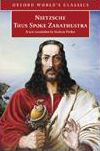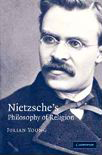The Life of Nietzsche - Page 4

In the next period, Nietzsche produces two works, namely Beyond Good and Evil (1886) and On the Genealogy of Morals (1887), which are his most developed critiques of what he called the ?morality of good and evil.? In the former, Nietzsche shows the conditions of morality or its make-up, whether they are found in our philosophical, religious, linguistic or scientific experiences, and paves the way to think ?beyond good and evil,? leaping over simple antithetical analyses and assessments. In Genealogy, Nietzsche dissects the soul configuration of the world-order shaped by morality and exposes its make-up as ressentiment, that is, rejection of, or contempt for that which is different or greater than one, bad conscience and guilt feeling, which is linked to the syndrome of crime and punishment, and the ascetic ideal which posits, as a value, the denial of the body, sensuality and sexuality. The three parts of the book make up a magnificent study of the soul, which could be called Nietzsche's psychology.
It was also in this period and just prior to it (from 1883 - 1888) that Nietzsche wrote many of the notes which were subsequently gathered and published under the misleading title, The Will to Power. Power in Nietzsche's thought is a broad notion and need not be confused with its common and everyday usage. With the notion of the will to power, Nietzsche tries to, on the one hand, link culture and life (or human being and cosmos) and, on the other hand, bring together, under one thought, various aspects of human existence, such as knowledge and art. Many other ideas are developed and explored in these notes as well, which illuminate Nietzsche's philosophy and some of its main concerns. One such idea is perspectivism, which claims that our relationship to existence is essentially perspectival or interpretive. Another one is the notion of value which, in fact, can be traced back to The Gay Science. All the other notions, such as revaluation and transvaluation, are somehow related to the notion of value. However, what has been published as The Will to Power is not a work which Nietzsche fashioned as his other books, but notes edited and compiled after his death, and during the summer of 1888 his original philosophical project was abandoned and re-developed as Revaluation of All Values, for which Nietzsche's outline was: Book 1: The Anti-Christ. Attempt at a Critique of Christianity. Book 2: The Free Spirit. Critique of Philosophy as a Nihilistic Movement. Book 3: The Immoralist. Critique of the Most Fatal Kind of Ignorance, Morality. Book 4: Dionysos. Philosophy of Eternal Return. Aside from the first book, this work was never completed, and the posthumously published notes, often referred to by people such as Heidegger as Nietzsche's magnum opus, have since been republished by Cambridge University Press as Writings from the Late Notebooks and it is untenable to refer to them as a completed text ? they cannot be seen in the same light as Nietzsche's other works. Though an important and extremely valuable addition, they are and remain notes, many of which were further developed by Nietzsche in other texts.

In the last period of his life as a writer, Nietzsche wrote, within the span of one year (in 1888), four short books which are highly polemical, temperamental, volatile, if not explosive, though some of his most eloquent and measured texts, where he truly accomplishes his goal of ?saying in ten sentences what everyone else says in a book - what everyone else does not say in a book?. Twilight of the Idols is Nietzsche's critique of idealism and his re-evaluation of Socrates, one of his favorite themes; men such as Socrates, Goethe, Wagner, and others become masks or types Nietzsche uses to illustrate conditions of the soul and points to strive for. Anti-Christ is a vehement but insightful and sustained polemic against Christianity, and The Case of Wagner is his overall evaluation of Wagner where Nietzsche accepts his gratitude to the master and outlines his points of contention and what he sees as most problematic in Wagner as an artistic type. Finally, Ecce Homo, the last philosophical book Nietzsche wrote before he collapsed (his final text, rather fittingly, is actually the book of poems, Dionysos-Dithyramben), is a testimony to his life. In this autobiographical work, Nietzsche evaluates his life and his works; it is an honest, but also comic (Nietzsche with the mask of Aristophanes) appraisal of a man who knew his greatness and lived it to its fullest as a writer and a thinker.
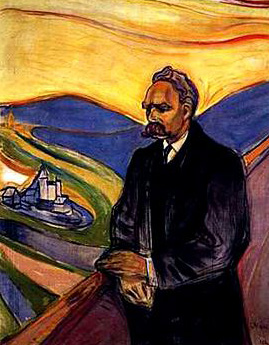 On January 3, 1889, Nietzsche collapsed in a piazza in Turin.
It is oft repeated that he saw a coach-driver beating his
horse, threw his arms around the horse in tears, and collapsed;
however, this is but another apocryphal legend that cannot
be corroborated with absolute verity. Italian Nietzsche scholar Verrecchia investigated and disputed this tale, which was originally published in an Italian newspaper somewhat akin to the Daily News called Nuova Antologia. It was written on September 16, 1900, nearly one month after Nietzsche's death, which means eleven years after the supposed incident occurred, making the account rather dubious (Verrechia, A. ?Nietzsche's breakdown in Turin? in Harrison, T, ed. Nietzsche in Italy. (Saratoga: Stanford University Press, 1988), pp. 105-112). The journalist who wrote the article did not sign his name to it. It was an anonymous article. Yet, that article is not the most graphic account; the one which is most well known was written more than fifty years after Nietzsche died. It includes the violent thrashing of the horse, which the first article did not, Nietzsche's wild embrace of the horse, and then, quite dramatically and as if Nietzsche possessed some uncanny degree of strength, it proclaims that after losing consciousness, Nietzsche sank to the ground still clutching the horse. This account ?in almost identical words,? was repeated, Verecchia notes, by a serious philosophy professor in his book on Nietzsche. The story is more and more difficult to believe, less a true scene from Nietzsche's life and more something out of Crime & Punishment. While two municipal guards may have seen Nietzsche embrace a horse and refuse to release it, the account is hardly that of the myth it has become. What is known is that Nietzsche collapsed in the piazza. When his friend Overbeck arrived sometime later, he escorted Nietzsche to Basel where he was kept in a psychiatric clinic for a week, then taken to the famous clinic in Jena where he would be close to his mother.
On January 3, 1889, Nietzsche collapsed in a piazza in Turin.
It is oft repeated that he saw a coach-driver beating his
horse, threw his arms around the horse in tears, and collapsed;
however, this is but another apocryphal legend that cannot
be corroborated with absolute verity. Italian Nietzsche scholar Verrecchia investigated and disputed this tale, which was originally published in an Italian newspaper somewhat akin to the Daily News called Nuova Antologia. It was written on September 16, 1900, nearly one month after Nietzsche's death, which means eleven years after the supposed incident occurred, making the account rather dubious (Verrechia, A. ?Nietzsche's breakdown in Turin? in Harrison, T, ed. Nietzsche in Italy. (Saratoga: Stanford University Press, 1988), pp. 105-112). The journalist who wrote the article did not sign his name to it. It was an anonymous article. Yet, that article is not the most graphic account; the one which is most well known was written more than fifty years after Nietzsche died. It includes the violent thrashing of the horse, which the first article did not, Nietzsche's wild embrace of the horse, and then, quite dramatically and as if Nietzsche possessed some uncanny degree of strength, it proclaims that after losing consciousness, Nietzsche sank to the ground still clutching the horse. This account ?in almost identical words,? was repeated, Verecchia notes, by a serious philosophy professor in his book on Nietzsche. The story is more and more difficult to believe, less a true scene from Nietzsche's life and more something out of Crime & Punishment. While two municipal guards may have seen Nietzsche embrace a horse and refuse to release it, the account is hardly that of the myth it has become. What is known is that Nietzsche collapsed in the piazza. When his friend Overbeck arrived sometime later, he escorted Nietzsche to Basel where he was kept in a psychiatric clinic for a week, then taken to the famous clinic in Jena where he would be close to his mother.
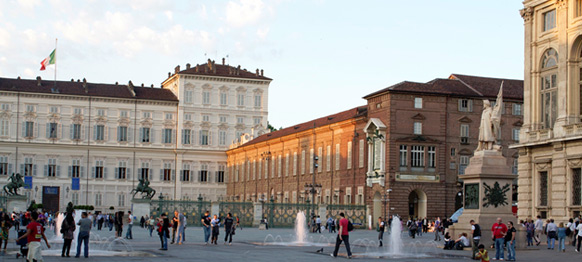
After staying for fourteen months at the clinic in Jena, he was taken to Naumburg where his mother and sister took care of him. The mother died in 1897 and Nietzsche was under Elisabeth's care until his death on 25 August 1900, at which point she inherited her brother's intellectual property. Nietzsche's ?madness? though, as Blanchot noted, is altogether unique; in seeking, through reason, to affirm the Eternal Return, Nietzsche is ?mad? because our language cannot capture, or express such a thought. However, ?in the silent language of his madness in which he seems to us to suffer the consequences of this passage to another language removed from the ordinary forms of temporality,? he is still mad, but it is a madness ?in which the formulation of the return has always already engaged him. Mad? ? But of a madness other than ours, other than his? (The Step Not Beyond, 40). As for the question of whether or not Nietzsche actually had syphilis, these claims have been vigorously disputed, in particular and at length by Richard Schain. It is improbable that Nietzsche ever had syphilis, but more likely suffered from ?endogenous? psychosis (a schizophrenic disorder originating within the body, not from an outside agent); in a short paper, Dr. Leonard Sax argued that nearly all of Nietzsche's symptoms correlate in particular with meningioma (eye cancer) of the right optic nerve. Schain states that a ?final diagnosis of chronic schizophrenic disorder . . . is perfectly compatible with all of the manifestations of mental disorder and physical dysfunction exhibited by Nietzsche? (The Legend of Nietzsche's Syphilis, Schain, p. 103). At very least, it is important to take these other hypotheses into consideration and not continue to perpetuate the syphilis hypothesis as if it were an incontestable fact, as has too often been done; only with the exhumation of Nietzsche's corpse will this long standing question ever be resolved with any certainty, but it is far too late for such an investigation.
In the early 20th century, Elisabeth was instrumental in distorting Nietzsche's work, deliberately forging letters and altering other passages, struggling to mold Nietzsche into an icon for the German state through editing and publishing work to suit her framing of it. She tried to establish a relationship with the Nazis by such tactics as inviting Hitler to the archives. But contrary to common (dis)knowledge, Hitler, though he did read Nietzsche, read him sparingly (in the leading biographies on Hitler, mention of Nietzsche is incidental) and was more influenced by Wagner's (who figures prominently in the biographies) anti-Semitic diatribes than by a philosopher whose contempt for the state and for his nation surely perturbed the fervent nationalist. Elisabeth, because her comprehension of Nietzsche's work was extremely limited, hired Rudolf Steiner, the Goethe scholar and founder of anthroposophy, to give her private lessons, which proved fruitless. Steiner stated that she was ?a complete laywoman in all that concerns her brother's doctrine? and that her thinking was "void of even the least logical consistency."
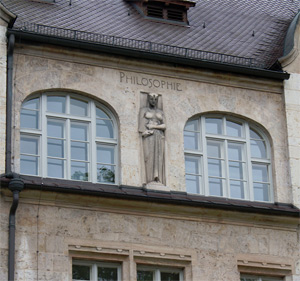 It was not until just before World War Two, prior to Walter
Kaufmann, George Bataille's pioneering work in Acèphale
would aid in emancipating Nietzsche from the stain of National
Socialism, and give him back to the free spirits. Nietzsche,
Bataille said, was ?the least patriotic of all Germans, and
the least German of the Germans.? The stateless individual,
who always spoke against his nation and the fervor of nationalism,
had finally been freed; the man who held the masses in contempt
(fascism is only possible by turning individuals into a mass)
and usually spoke on behalf of individuals (though community
was important to Nietzsche as well, and individualism often
a symptom of decadence in society) and for mixed breeding
(he did at times also see this as a source of the 19th century's
spiritual confusion), found in Bataille a Dionysian spirit
who wrestled his work from such incongruous associations and
made it radiate and dance like an exploding star, spreading
out and above the sordid domains in which it was but temporarily
caught.
On September 24, 1886, Nietzsche stated in a letter that ?people will be allowed to read [my work] in about the year 2000.?
It has not taken that long to liberate his work from unjust and absurd correlations, but perhaps, in this new millennium, it
is even freer of such associations, and we will be able to read and interpret this work with a greater degree of clarity.
The great noontide may be at hand ~ has it not always been, eternally?
It was not until just before World War Two, prior to Walter
Kaufmann, George Bataille's pioneering work in Acèphale
would aid in emancipating Nietzsche from the stain of National
Socialism, and give him back to the free spirits. Nietzsche,
Bataille said, was ?the least patriotic of all Germans, and
the least German of the Germans.? The stateless individual,
who always spoke against his nation and the fervor of nationalism,
had finally been freed; the man who held the masses in contempt
(fascism is only possible by turning individuals into a mass)
and usually spoke on behalf of individuals (though community
was important to Nietzsche as well, and individualism often
a symptom of decadence in society) and for mixed breeding
(he did at times also see this as a source of the 19th century's
spiritual confusion), found in Bataille a Dionysian spirit
who wrestled his work from such incongruous associations and
made it radiate and dance like an exploding star, spreading
out and above the sordid domains in which it was but temporarily
caught.
On September 24, 1886, Nietzsche stated in a letter that ?people will be allowed to read [my work] in about the year 2000.?
It has not taken that long to liberate his work from unjust and absurd correlations, but perhaps, in this new millennium, it
is even freer of such associations, and we will be able to read and interpret this work with a greater degree of clarity.
The great noontide may be at hand ~ has it not always been, eternally?
Subscribe
To receive site updates, news, and announcement from NC via email. To do so, you simply need to provide your email address below.
-
Nietzsche on Language, Consciousness, and the BodyBy Christian J. Emden
University of Illinois Press, 2005
Reviewed by Daniel Blue"...drawing on much previously unpublished and undiscussed Nietzsche material, Emden examines the role of metaphor and interpretation, reasserting the relevance of rhetoric to philosophy, in consonance with Nietzsche's own statements and practices"
-
Nietzsche's New DarwinismBy John Richardson
University of Illinois Press, 2005
Reviewed by Bradley Park (St. Mary's College of Maryland)"...The strength of Richardson’s book is that it does not merely discuss the influence of Darwin’s thought on Nietzsche or catalog points of similarity and difference"
-
Thus Spoke ZarathustraBy Friedrich NietzscheA new translation by Graham Parkes
Oxford University Press, 2005
Reviewed by Horst HutterThis new translation of Nietzsche’s magnum opus is by far the best available in the English language. It should find its way to the desk of all students who do not have access to the original German.
-
Nietzsche’s Philosophy of ReligionBy Julian YoungCambridge University Press, 2006
Reviewed by Horst Hutter,
Concordia UniversityEvery student of Nietzsche in the Anglophone world should read this book. It is a most able treatment of a much-ignored and much-misunderstood topic close to the very heart of the writings of this seminal thinker.





